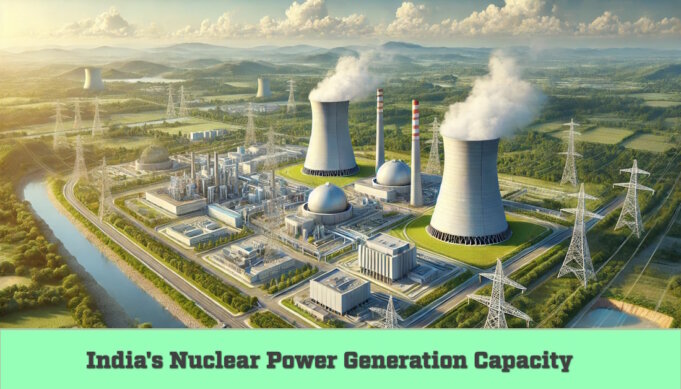India’s nuclear power generation capacity has witnessed remarkable growth over the past decade, almost doubling from 4,780 MW in 2014 to 8,180 MW in 2024. This information was shared by Dr Jitendra Singh, Union Minister of State (Independent Charge) for Science and Technology, Earth Sciences, PMO, Department of Atomic Energy.
Dr Singh highlighted the advancements and potential of India’s atomic energy program, outlining a comprehensive roadmap to enhance self-reliance in nuclear power generation. He noted that the revision of the power distribution formula has allocated 50 percent of atomic power-generated electricity to the respective home state, 35 percent to neighbouring states, and 15 percent to the national grid. This approach aims to ensure fair distribution of energy resources in line with the nation’s federal ethos.
He emphasized that India’s nuclear power capacity is expected to triple, reaching 22,480 MW by 2031-32. This progress stems from initiatives such as the bulk approval of 10 nuclear reactors, increased funding, collaborations with Public Sector Undertakings (PSUs), limited private sector involvement, and technological advancements alongside administrative reforms.
Dr. Singh also highlighted the versatile applications of atomic energy. In agriculture, 70 mutagenic crop varieties have been developed; in healthcare, advanced isotopes for cancer treatment have been introduced; and in defence, atomic processes are being used to produce lightweight, cost-efficient bulletproof jackets.
He further mentioned India’s significant thorium reserves, which constitute 21 percent of the global total, and Indigenous projects like “Bhavani” aimed at reducing dependence on imported uranium. Despite challenges such as land acquisition, forest clearances, and equipment procurement, nine atomic power projects are currently under construction, with more in the planning stages.
Discussing historical achievements, Dr Singh referred to projects like the Kudankulam Nuclear Power Plant, which gained momentum post-2014 under Prime Minister Narendra Modi’s leadership. He reaffirmed India’s commitment to the peaceful use of atomic energy as envisioned by Dr Homi Bhabha and stressed its role in sustainable development under the vision of “One Nation, One Government.”
This progress demonstrates India’s resolve to achieve energy self-sufficiency, foster innovation, and utilise nuclear energy for peaceful purposes across various sectors, contributing to national growth and sustainability.
Cover photo: Source: OpenAI-DALL·E











